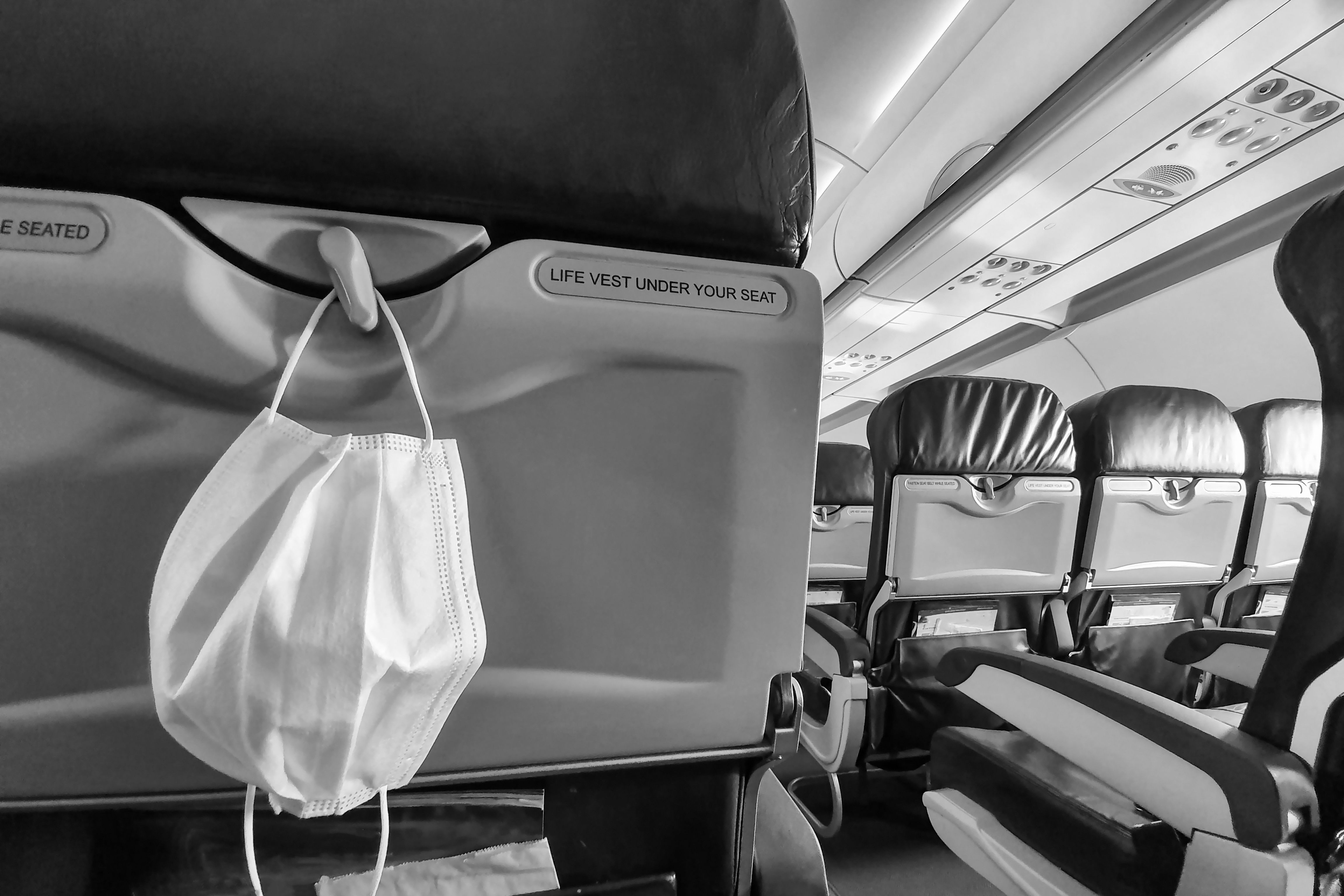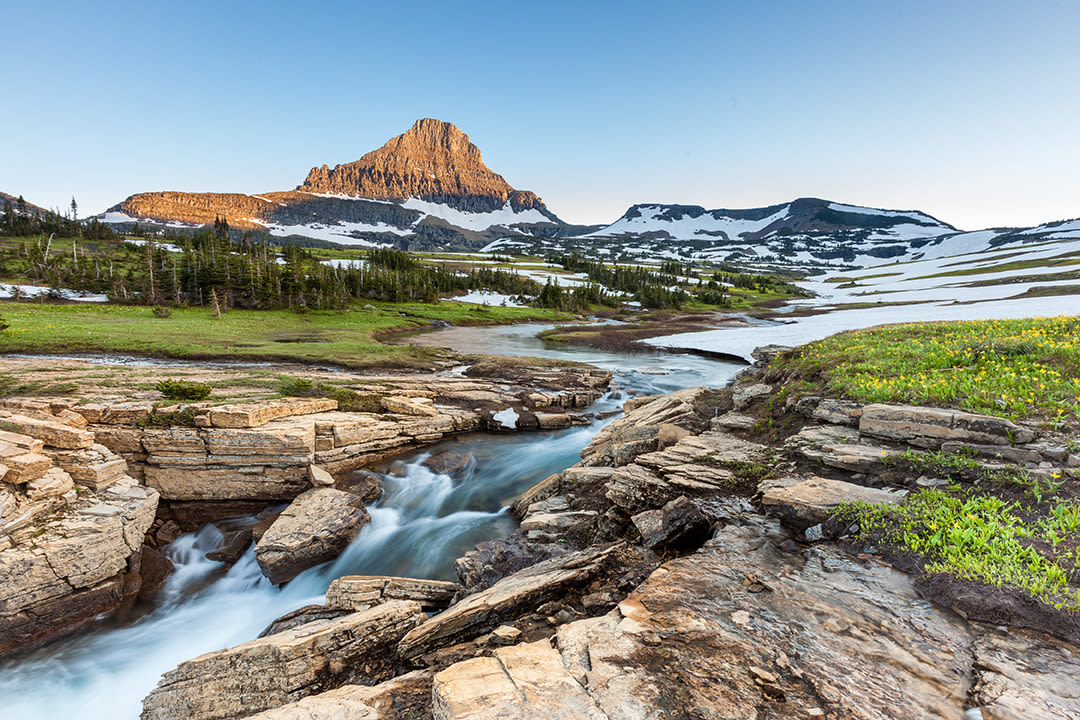Pandemic Travel: An Essential Worker in Alaska
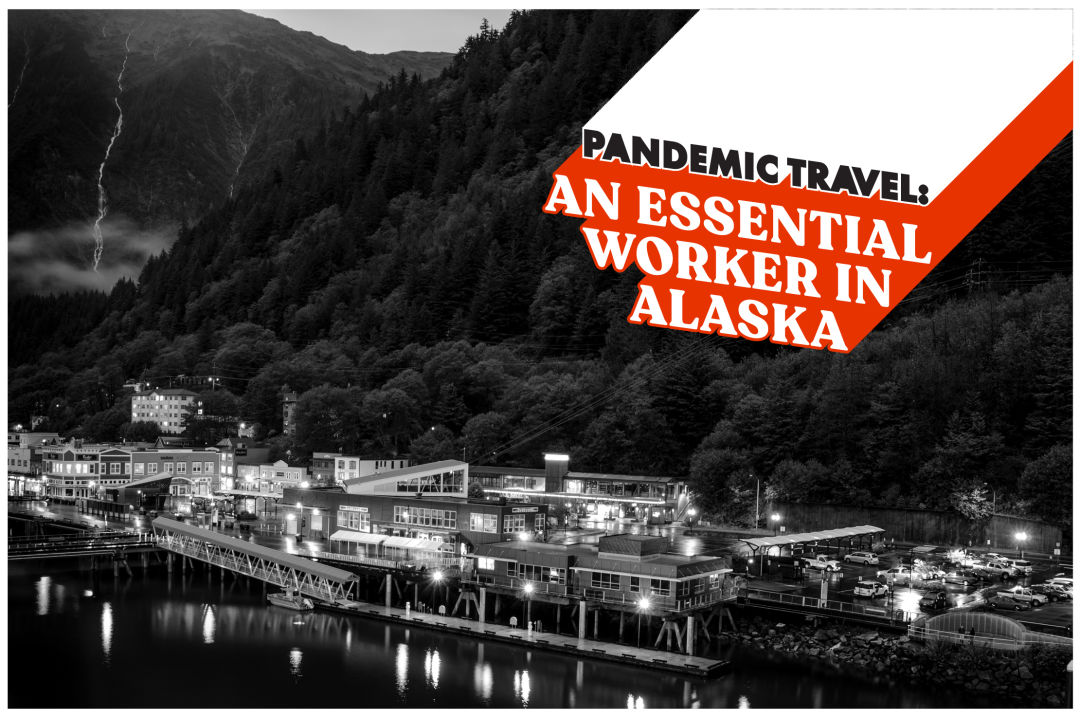
Juneau, Alaska
Image: Courtesy lembi/Shutterstock
We all have our own risk tolerance levels nowadays when it comes to leaving the house, whether it’s to exercise, get groceries, visit the dentist, see loved ones, or get to work. It’s no different when it comes to getting the heck out of town. Some of us traded European adventures for a weekend in Vegas or distanced mountain getaway, while some have stayed hunkered down at home until tragedy struck. Others, like MacKensie Cornelius, started taking farther and farther trips for work. She’s an archaeologist, but her trips to Alaska over the course of 2020 turned her into a bit of an anthropologist, too.
When I exited my plane in Juneau, Alaska, last June, my first flight since the pandemic started, I prepared for the moment of truth. I had letters from my client confirming I was an essential worker, a copy of my COVID protection plan, a copy of a negative COVID-19 test taken 72 hours before, and confirmation from a hotel where I would quarantine when not working. Through May, I had booked and rebooked my flights as Alaska repeatedly changed and extended their travel mandates, requiring a full two-week quarantine for arrivals and then finally making special provisions for certain types of travelers, including critical infrastructure workers like me, and allowing for a pre-test option. Not that I blame them—we all could see how every state was struggling to keep up with the unfolding pandemic and balance the growing case numbers, revolving medical advice, and public sentiment pressures.
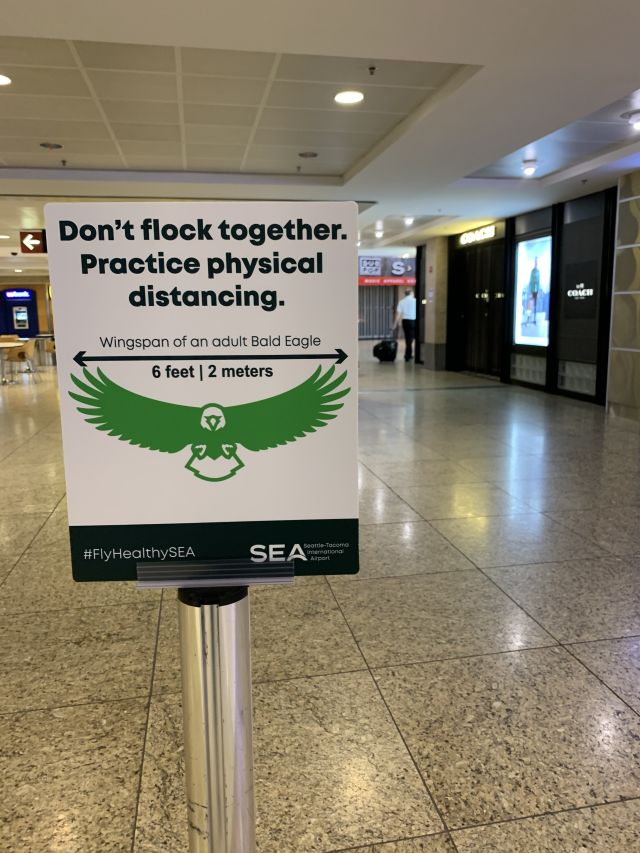
A sign at Sea-Tac Airport
Image: MacKensie Cornelius
Only a handful of us were on the Seattle to Juneau flight. No one had to be cajoled into wearing their mask, and there was no food or drink service to justify removing it at all if you didn’t plan ahead with a drink or snack. As an anxious over-preparer, I had called the Juneau Airport, Alaska’s 211 information line, and finally the Juneau Tourism Board to figure out what to expect on the ground. It was the tourism board that was able to tell me I just needed my printouts and advised me as to the best quarantine hotels, food delivery options, and where there were public bathrooms open near my worksite—something I had realized would be an issue on another pandemic work trip into Washington state the week before.
Our arrival proved anticlimactic, with two screeners at a row of card tables checking our COVID tests and directing us to fill out a short form. No one needed to see my printouts or particularly cared about my worker status. I dutifully quarantined in my room when not working, grateful that my job included photographing structures in Juneau’s historic downtown on a frigid but gloriously sunny day. I picnicked on the boardwalk where the cruise ships dock, empty at what should have been the beginning of a busy tourist season.
Though I got most of my meals from my hotel with no-contact delivery to my door, I tried for a takeout order one afternoon. This was my first sign that while Alaska’s ports of entry were on high COVID alert, the rest of the state was … not so much. None of the businesses I tried had contactless pickup, so even when I phoned in my order, I still had to enter and pay at the register. At that time, there were no separate entries and exits, no social distancing indicators, no contact tracing, no clean pen and dirty pen-holders, and also no masks on fellow patrons. I made a mental note to prepare for a lot of hotel food and microwave meals on future trips if I wanted to maintain my own comfort level.
With one trip down, I was confident in booking more work in the region, taking four more trips to Alaska during 2020, though as the conditions of the pandemic continued to change, every visit had its own flavor. The mandates continued to change frequently; free tests on arrival for everyone, then just for residents; 14-day quarantine for workers when not at work, then just social-distancing for 14 days if you’ve had a negative test. Alaska developed an online portal, but on my first try to use it nothing worked, and the screener in Anchorage when I arrived just waved me through. Each flight had more and more passengers, fewer of whom seemed to fit the profile of essential workers. I met Alaskans returning from visiting family, a group of nurses from the Lower 48 hoping a week of stunning scenery would provide a much-needed catharsis, and a few groups of regular tourists doing their annual visit for never-ending sunlight and fishing, with an attitude of “Hey, if they’ll let me in, then why not?”
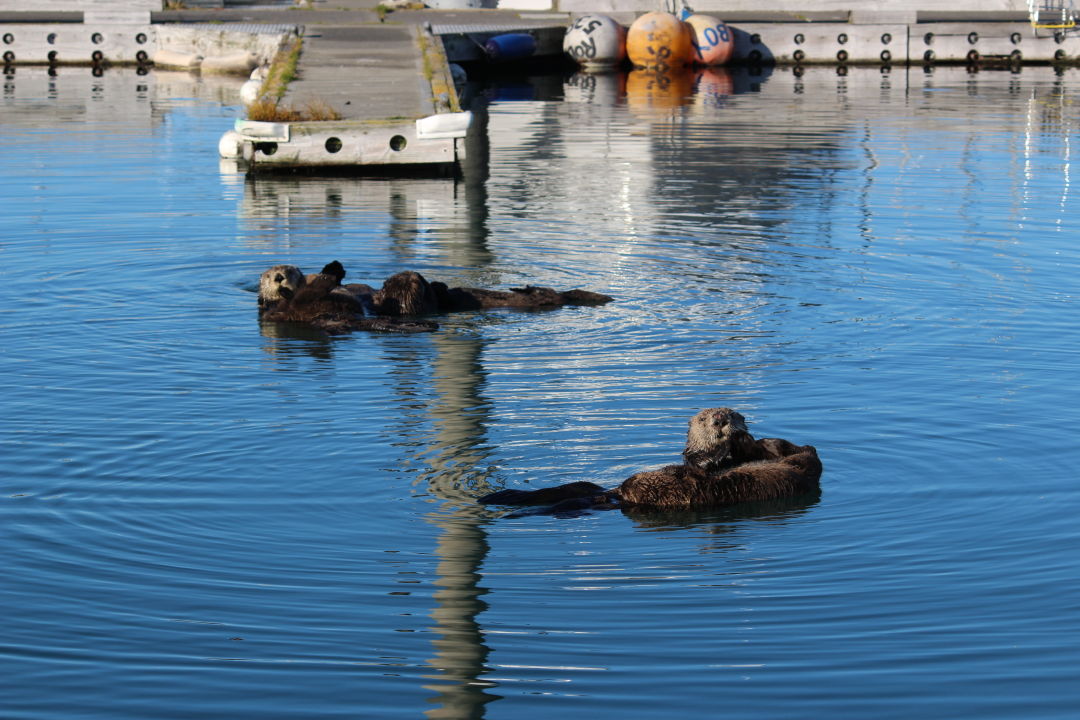
Crowds were thin on the Homer Spit, but the sea otters didn’t mind.
Image: MacKensie Cornelius
It was easy for me to isolate while working. I’m an archaeologist doing small infrastructure projects, and I usually only need a day or two at each site. I stacked work, driving up and down the Seward and Sterling Highways in July, September, and October. These roads would normally be slowed by lines of RVs fanning out to all of the recreational draws of the Kenai Peninsula, but I found them virtually empty. Though I enjoyed the quiet beauty of the Chugach Mountains and Cook Inlet on my drive, I knew the quiet meant a lot of loss for the local communities. So many of the businesses I passed were shuttered. On the Homer Spit, normally overflowing with walkers bouncing between bars, shops, and beaches, it was so quiet I could hear the resident sea otters squeaking to each other at the docks.
As the year progressed, more passengers on each flight meant more mask rebels, the beleaguered flight attendants having to repeatedly remind people of the rules. I also observed a fair amount of mandate dodgers. It was easy for determined arriving passengers to skip the screening lines in Anchorage, just pretending they were walking to another terminal and then doubling back. After a flight to Sitka in November, when our plane stopped in Ketchikan and Juneau briefly on the way from Seattle, a fraction of us got in line for our COVID screening on arrival, as a screener directed anyone who was arriving from in-state could just exit the airport. Most of the plane gleefully exited, even though the tiny number of passengers we picked up on our two stops did not add up to anywhere near the number in the exodus.
In town I found similar conditions to what I had seen in the rest of the state, some people wearing masks, many not, and less stringent COVID safety standards than we’ve become used to in Portland. Even at my hotel, nearly at capacity when I booked my room, some staff opted not to wear masks. Boggled, I spent most of my time in Sitka outside. When not working, I hiked the trails of Sitka National Historical Park and the Starrigavan Recreational Area. There I could focus my attention on more immediate concerns, like the signs of recent bear activity.
After a winter respite, I find myself gearing up for another season of pandemic travel. My vaccine eligibility is currently months away, so I’m stocked up on the latest, greatest mask styles in anticipation of fuller flights. Barring calamity, I’ll have to muddle through the stress and isolation of COVID-times work travel a few months more. But I look forward to the mountain views or random sea otter sighting that will save the day.
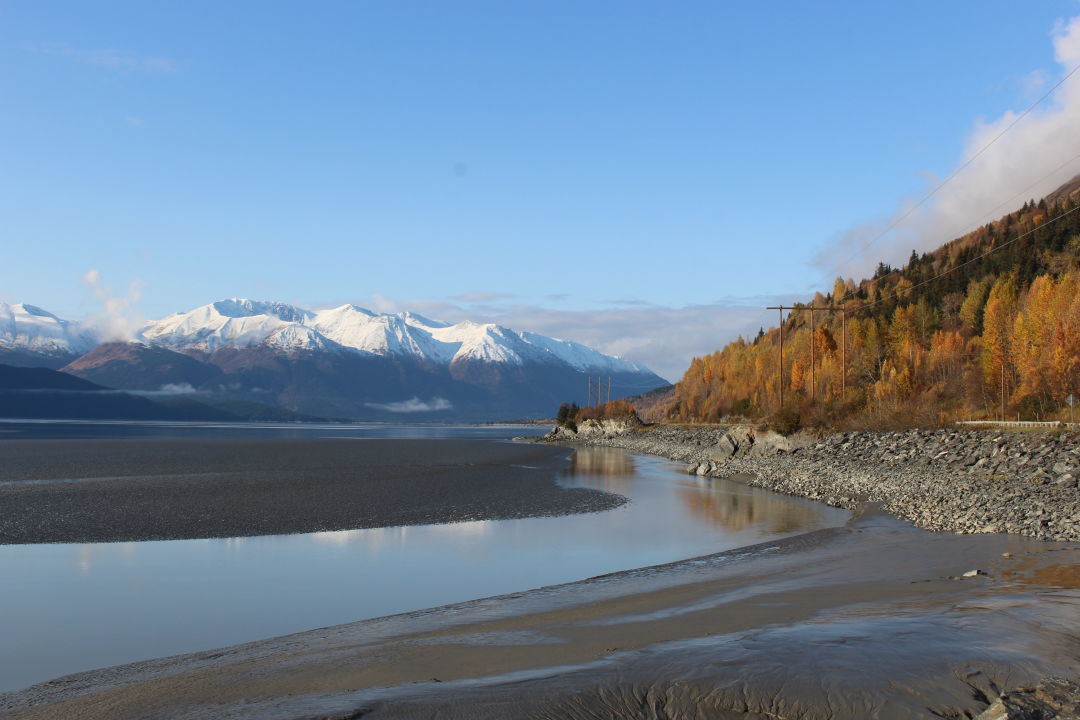
A view along the very uncrowded Seward Highway
Image: MacKensie Cornelius
MacKensie Cornelius is an archaeologist and writer based in Portland. Along with her Kiwi husband, her travels tend to swirl around the Pacific though she has her sights set on the Arctic for future adventures.

